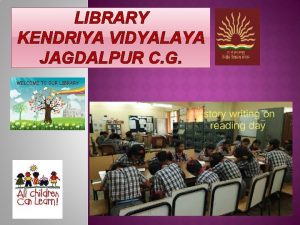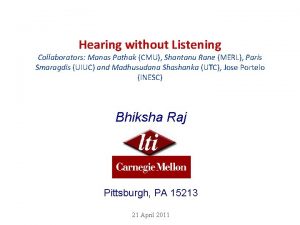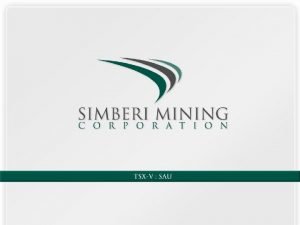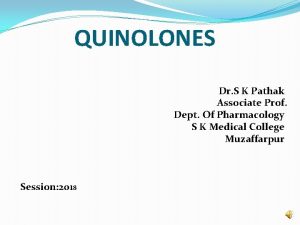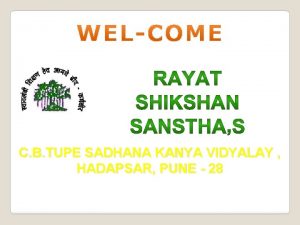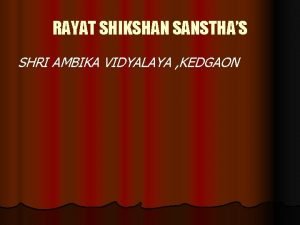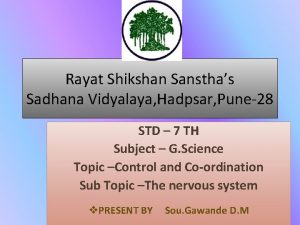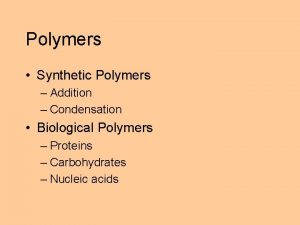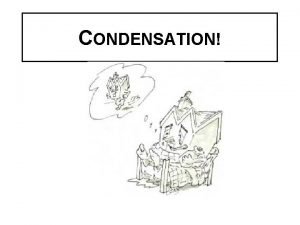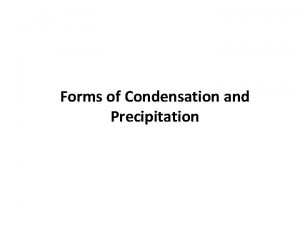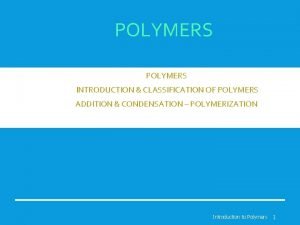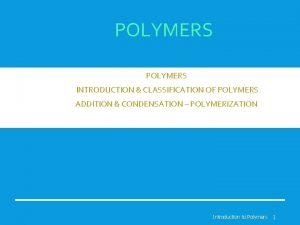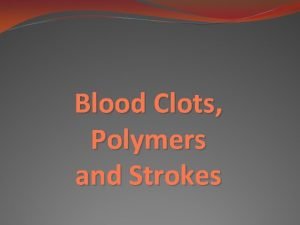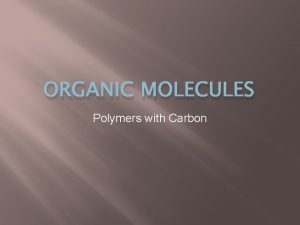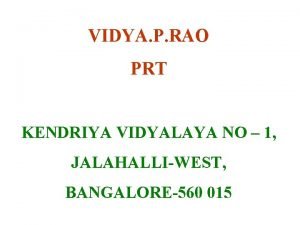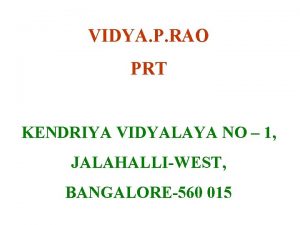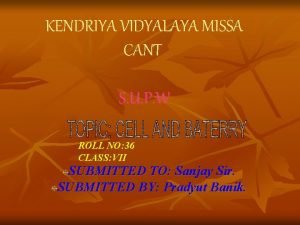CONDENSATION POLYMERS Mrs Neelima Pathak PGTchemistry Kendriya Vidyalaya


































- Slides: 34

CONDENSATION POLYMERS Mrs. Neelima Pathak PGT-chemistry Kendriya Vidyalaya Vayusenanagar , Nagpur.

Polymer: The word polymer has a Greek origin. which means many units (parts). Polymerisation: The process by which the monomers get combined and transformed into polymers is known as polymerisation. n [Monomer] → Polymer

Condensation polymers : The polymers which are formed by the combination of monomers with the elimination of small molecules such as water, alcohol, hydrogen chloride etc. . , are known as condensation polymers, e. g. , nylon 6, 6 is formed by the condensation of hexamethylene diamine with adipic acid.

Distinction Between Chain Growth Polymerisation and Step Growth Polymerisation S. No. Chain growth polymerisation It proceeds by a chain mechanism 1. characterized by initiation, chain propagation and chain termination. 2. Step growth polymerisation It proceeds by an equilibrium step mechanism. The step growth process is usually much slower than chain growth polymerisation. Only one repeating unit is added at a Any two species present can react time. with elimination of some small molecule.

1. Nylon 6, 6 Monomers: - 1. adipic acid 2. hexamethylene diamine a

Nylon 6, 6 It is obtained by the condensation of adipic acid and hexamethylenediamine with the elimination of water molecule.

Properties ***Nylon-6, 6 is a linear polymer ***It has very high tensile strength. ***It shows good resistance to abrasion.

Uses: • Nylon-6, 6 is usually fabricated into sheets. It is used in bristles for brushes and in textile.

2. Nylon-6 Monomer: -caprolactam

Caprolactam

2. Nylon-6 is obtained by heating caprolactam with water at a high temperature.

RESINS 1. Phenol-Formaldehyde Polymer(Bakelite) Monomers: 1. 2 Phenol . Formaldehyde C

These polymers are obtained by the condensation reaction of phenol with formaldehyde in the presence of either acid or a base catalyst. The reaction involves the formation of methylene bridge at ortho, para or both ortho and para positions. A linear or cross linked material is obtained depending upon the condition of reaction.

NOVOLAC---LINEAR ARRANGEMENT

BAKELITE---CROSS LINKED ARRANGEMENT

Uses: Bakelite is used for making combs, photograph records, electrical switches etc.

Melamine-formaldehyde Resin Monomers: 1. Melamine 2. Formaldehyde

2. Melamine-formaldehyde Resin It is a copolymer formed by the polymerisation of melamine (which is a heterocyclic triamine) and formaldehyde as follows :

Properties and Uses: **It is very hard and tough. **It has assumed great importance these days particularly in making crockery. **They do not break even when dropped from a height.

3. Urea-formaldehyde Resin Monomers: 1. Urea 2. Formaldehyde

3. Urea-formaldehyde Resin

Polyesters The polymers which contain an ester linkage are known as polyester, e. g. Terylene Glyptal

Properties and uses It is a hard and transparent polymer and is quite resistant to the effect of light, heat and ageing. It is used, in the manufacture of unbreakable lights, protective coatings, dentures, and in making windows for aircrafts.

Glyptal Monomers: 1. Ethylene glycol 2. Phthalic acid

Glyptal It is a polyester having crosslinks.

Terylene (Dacron) Monomers: 1. Ethylene glycol 2. Phthalic acid

Terylene (Dacron) It is a condensation product of ethylene glycol and terephthalic acid. Polymerisation is carried out at 420 to 460 K in the presence of catalyst mixture of zinc acetate and antimony trioxide.

Properties and uses: Terylene is highly resistant to the action of chemical and biological agents. Its fibers are quite strong and durable. It can also be blended with wool or cotton to obtain fabrics of desired composition. Terylene is used in the manufacture of a variety of clothes such as terycot, terywool and terysilk as a result of blending with other yarns. It is also used for preparing magnetic recording tapes, conveyer belts, aprons for industrial workers etc. .

Biopolymers Nature has provided us a variety of polymers which can be produced by the biological systems in plants and animals. ****These are called biopolymers, e. g. , polysaccharides, proteins, nucleic acids, etc. . ****In the biological system, these polymers decompose or hydrolyse in the Presence of different enzymes. This means that they are biodegradable.

Biodegradable Polymers The synthetic polymers which can be decomposed by microorganisms or living system are called Biodegradable Polymers.

PHBV It is a copolymer of 3 -hydroxybutanoic acid and 3 hydroxypentanoic acid.

Nylon-2 -Nylon-6 (Polyamide copolymer) Monomer: -glycine (H 2 N-CH 2 -COOH) Amino caproic acid [H 2 N(CH 2) 5 COOH]

Nylon-2 -Nylon-6

THANK YOU
 Kendriya vidyalaya sangathan bangalore
Kendriya vidyalaya sangathan bangalore Kendriya vidyalaya jagdalpur
Kendriya vidyalaya jagdalpur Kendriya vidyalaya mahasamund
Kendriya vidyalaya mahasamund Kendriya vidyalaya bhu
Kendriya vidyalaya bhu Lesson plan kvs bangalore region
Lesson plan kvs bangalore region Lesson plan kvs bangalore region
Lesson plan kvs bangalore region Chemsheets
Chemsheets Clinux
Clinux Neelima gupta delhi university
Neelima gupta delhi university Neelima pandey
Neelima pandey Natu pathak
Natu pathak Manas pathak
Manas pathak Rambabu pathak
Rambabu pathak Dr supratik chakraborty
Dr supratik chakraborty Paul pathak
Paul pathak Soma pathak
Soma pathak Pallavi pathak
Pallavi pathak Fissure rolando
Fissure rolando Minakshi pathak
Minakshi pathak Archita pathak
Archita pathak Archita pathak
Archita pathak Dr s k pathak
Dr s k pathak Mrs. darling was ___________ of mrs. s.
Mrs. darling was ___________ of mrs. s. They are mrs garcia and mrs castro
They are mrs garcia and mrs castro They are mrs garcia and mrs castro
They are mrs garcia and mrs castro Maharaja sawai man singh vidyalaya
Maharaja sawai man singh vidyalaya Sadhana kanya vidyalaya hadapsar
Sadhana kanya vidyalaya hadapsar Swach vidyalaya abhiyan
Swach vidyalaya abhiyan Maharaja sawai man singh vidyalaya
Maharaja sawai man singh vidyalaya Shri ambika vidyalaya kedgaon
Shri ambika vidyalaya kedgaon Spoqr
Spoqr Swachha vidyalaya puraskar.com
Swachha vidyalaya puraskar.com Rayat shikshan sanstha sadhana vidyalaya hadapsar
Rayat shikshan sanstha sadhana vidyalaya hadapsar Chhatrapati shivaji vidyalaya
Chhatrapati shivaji vidyalaya Rayat shikshan sanstha sadhana vidyalaya hadapsar
Rayat shikshan sanstha sadhana vidyalaya hadapsar

